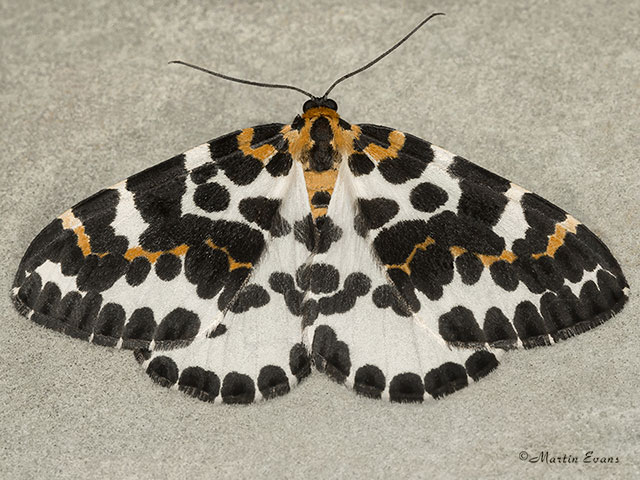Geometridae
70.205 Magpie Moth Abraxas grossulariata (Linnaeus, 1758)
Common
Similar species: Although the size of the spots vary it is still distinctive. The crambid Small Magpie Anania hortulata is superficially similar, but is much smaller (13 to 16mm). It has dark grey spots on a white background and a similar ochreous colour on its thorax, but lacks the yellow band across the forewing.
Forewing: 18 to 25mm
Habitats: Abundant on Heather moorland in Scotland, but also in woodland, scrub, hedgerows, scrubby sand-dunes, allotments and gardens.
Habits: On Skye in Scotland (and other parts of the Hebrides) the moth has been recorded flying in large numbers across areas of moorland with moths resting on almost every clump of Heather. In the south the moth may occasionally be found in the day resting on foliage. It comes sparingly to light, but can often be seen flying along rides after midnight.
Foodplant: The larva feeds on Black Currant, Red Currant, Gooseberry, Blackthorn, Hawthorn, Midland Hawthorn, Bramble, sallows, Hazel, Spindle, Evergreen (Japanese) Spindle, Garden Privet, garden Sedum species, Heather and other deciduous trees and shrubs. It pupates in a flimsy cocoon on the foodplant.





